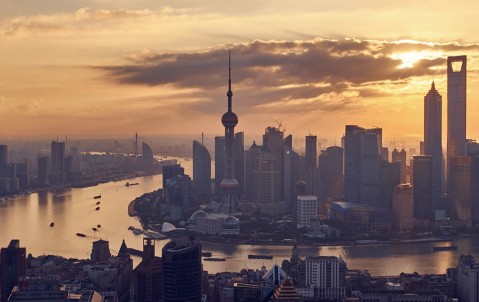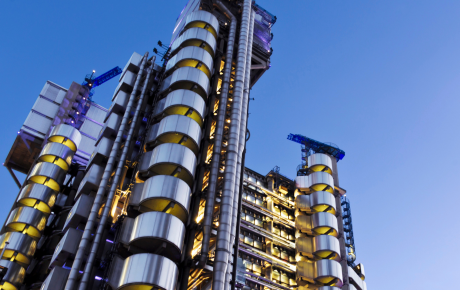
Taller, bigger, brasher: the mega-home heads east
Many of today’s billionaires, particularly in developing economies, see the construction of vast properties as a way to flaunt their enormous wealth.
The most expensive private residence in the world, according to Forbes, is not in London's Kensington Palace Gardens, New York's Manhattan, Florida's Palm Beach, or even the millionaire’s playground of Monte-Carlo, but currently soars above the Cumballa Hill area of Mumbai in India.
Indian billionaire Mukesh Ambani has spent more than $1 billion erecting a 27 story, 400,000 square foot skyscraper that requires 600 staff to maintain. Must-have features include three helipads, a four-storey hanging garden, 50-seat cinema, a ballroom, and parking for a few friends ...well, 160 of them anyway.
There is a new emerging wealth class who see a no-expense-spared residence as a natural expression of their phenomenal wealth
While the rise of Ambani's skyscraper Antilia - named after a mythical Atlantis island - is the most flamboyant statement yet of the emergence of a new wealthy elite from the fast-growing economies of China and India, the increasing trend for high-value mega-homes (part of the so called ultra-prime market) in these regions is likely to continue. "There is a new emerging wealth class who see a no-expense-spared residence as a natural expression of their phenomenal wealth,” says Jonathan Powell, Household Line Underwriter, Hiscox London Market.
Insuring these types of properties – even ones worth a $1 billion or more and sited in natural catastrophe zones – represents a great opportunity for international insurance markets like London, says Powell, although there are problems, such as access, distribution and effective claims handling to be overcome.
We have nothing to equal this
The big brash home is nothing new, of course. On arriving for a stay in 1786 at the 187-room, 2,000- acre estate of Blenheim Palace, England, the visiting King George III commented to his wife Queen Charlotte, “We have nothing to equal this.” Outdoing royalty, even today, still takes some doing, but billionaires are not shy about flaunting their wealth.
Helicopter pads; subterranean expansion (if space is squeezed in town); multiple swimming pools; theatres; ballrooms; private museums; even independent power plants. These are the hallmarks of the mega-home. Left your house keys at work? Not a problem for the billionaire homeowner who has probably had iris-recognition technology fitted to their front door.
For emerging markets, we are looking for risks that play well to our appetite in terms of pricing and monitoring of exposures, and are not well catered for by their local markets
It’s not just in the traditional 'old world' regions of Europe or the US, or billionaire property hotspots like the Caribbean, however, where these homes are springing up. Jakarta comes top of the top 10 fastest growing luxury residential property markets, which also includes Bali, Beijing, and Guangzhou, according to research from estate agent Knight Frank. More research by Savills in 2013 found that Mumbai was second only to Singapore in terms of the highest growth (176%) in ultra-prime property values since 2005.
A growth opportunity for insurers
For the London Market, this growth could provide a rich seam of opportunity, given the geographical characteristics of many of these homes. "The London Market is good at underwriting in catastrophe-exposed areas, " says Powell. "The US west coast has earthquakes, and there are windstorms and earthquakes in the Caribbean – areas where we're already strong when it comes to underwriting ultra-prime properties. For emerging markets, we are looking for risks that play well to our appetite in terms of pricing and monitoring of exposures, and are not well catered for by their local markets.
"Take India for example. There is a big earthquake risk in parts of the country in what is a very controlled and closed insurance market. Local insurers are not so experienced at controlling the risk selection and exposure in these cat-exposed areas. In many cases the risk limits are also too big for the local markets, and they may not have the knowledge needed to cover the wider liabilities that wealthy individuals face."
Access to these markets, however, is one of the biggest obstacles for international underwriters. "London insurers can't write directly in India and China, so we would need to partner with local insurers," says Powell. ”Finding the right sort of partner is critical. You effectively give away your intellectual property to a local insurer that might decide to drop you at some stage. The challenge is to keep innovating, so that you always offer something new. Canada is a great example of a region where we continue to refine and innovate our offering in the ultra-prime market, so that we're always bringing something fresh to the local markets there."
Finding Italian marble
Handling claims efficiently in regions where the necessary claims infrastructure might not be as strong is also an issue to be resolved, says Peter Parsons, Property Claims Manager for Hiscox London Market. “Getting the necessary loss adjusting experts to a claim is key and might be difficult in a relatively new market. In the Caribbean for example, we've teamed up with locals who really know the area and the people – who to deal with and who not to. That process would need to happen in any new markets. In addition, ultra-prime homes are built with high-specification materials, such as Italian marble for example. These would have to be imported into the country in the event of a claim which can add layers of cost and delay.”
You also need to deal with the property owners: very rich people with expensive tastes and exacting standards, Parsons adds. “If their accommodation is rendered uninhabitable by a fire for example, the challenge is finding suitable alternative accommodation.”
We had one ultra-high-net worth home in the Middle East where a 40 tonne sculpture had been stolen from the property’s front garden
And, as you might expect, the claims can also be somewhat unusual. “We had one ultra-high-net worth home in the Middle East where a 40 tonne sculpture had been stolen from the property’s front garden," says Parsons.
Despite these challenges, brokers and insurers in international markets have a real opportunity to exploit what is likely to be an increasing trend in the emerging economies – even if not all the new ultra-prime properties can compete with the scale of Ambani's skyscraper.
Check your insurance proposal
Of course, whether you’re a billionaire residing in a modern-day palace or a less wealthy individual living a more humble existence in a semi-detached in Acacia Avenue, some insurance rules will always apply. “We had one case in Canada where a cellar was flooded, ruining a $5 million collection of fine wine. Unfortunately the homeowner had failed to disclose the wine on his insurance application and was only able to claim a modest limit for unspecified items,” warned Parsons. Billionaire or not, it always pays to make sure you're properly insured.
"Oddly enough the rise of the billionaire ghetto is a development we're likely to see more of,” comments Powell. “There's a curious trend that many rich people don't seem to mind being overlooked by other rich people, whether it is in the Caribbean's Albany, or in Kashmir in India, which is being touted as a future hot spot for the ultra-prime market. There is a big earthquake risk in Kashmir, so it would suit the London Market appetite very well.”
The world's top ten most expensive billionaire homes
|
Name (Where) |
Owner |
Value |
Bling factor |
|---|---|---|---|
|
1. Antilia (Mumbai, India) |
Mukesh Ambani |
$1 billion |
Happy landings with three helicopter pads. |
|
2. Villa Leopolda (Villefranche-sur-mer, France) |
Lily Safra |
$750 million |
50 gardeners keep things trim on this 50-acre estate. |
|
3. Fair Field (Sagaponack, New York, US) |
Ira Rennert |
$248 million |
No utility bills here with a power plant on site. |
|
4. Kensington Palace Gardens (London, UK) |
Lakshmi Mittal |
$222 million |
Parking a nightmare in central London? This place comes with garage space for 20 cars. |
|
5. One Hyde Park (London, UK) |
Rinat Akhmetov |
$221 |
Why get up for a glass of water in the middle of the night – instead call the 24-hour hotel concierge service. |
|
6. Ellison Estate (Woodside, California, US) |
Larry Ellison |
$200 |
Take tea for two at the purpose-built tea house. |
|
7. Kensington Palace Gardens (London, UK) |
Roman Abramovich |
$140 million |
Poor backhand? Improve it in private on the underground tennis court. |
|
8. Blossom Estate (Palm Beach, Florida, UK) |
Ken Griffin |
$130 million |
Somewhere to lay your towel with eight acres of ocean views. |
|
9. Xanadu 2.0 (Seattle, Washington, US) |
Bill Gates |
$120.5 million |
Perhaps listen to Handel’s Water Music over the pool’s underwater music system while practising your front crawl? |
|
10. Mountain Home Road (Woodside, California, US) |
Masayoshi Son |
$117.5 million |
Plenty of room for the lounger in the 1,117-square foot colonnaded pool house. |



